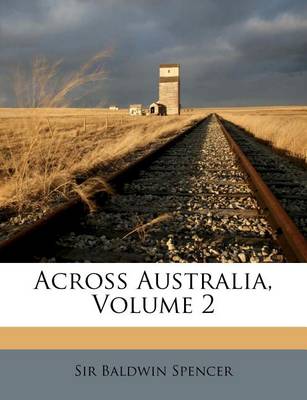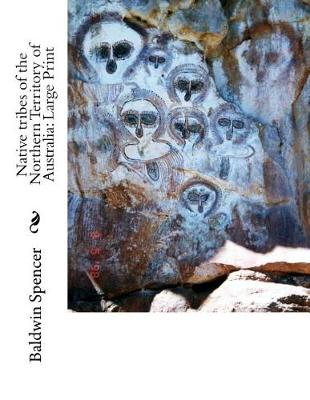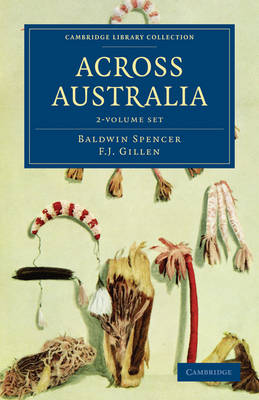Cambridge Library Collection - Linguistics
2 primary works • 5 total works
Volume 1
Eminent biologist Sir Baldwin Spencer (1860-1929) was born in Lancashire but moved to Australia to take up the chair in biology at the University of Melbourne in 1887. As a member of the 1894 Horn Scientific Expedition to Central Australia, Spencer made the acquaintance of F. J. Gillen, an advocate of Aboriginal rights, with whom he later formed a working partnership. Spencer and Gillen returned to Alice Springs in Central Australia in 1896-1897, to carry out observations on the local Aboriginal tribe, the Arunta. These observations were published in 1899, in The Native Tribes of Central Australia (also reissued in this series), which represented the most comprehensive study of Aboriginal customs and habits. Gillen and Spencer continued to undertake fieldwork until 1903. Volume 1 of Across Australia (published in two volumes in 1912) describes the region's topography, and the customs and beliefs of the Arunta.
Volume 2
Eminent biologist Sir Baldwin Spencer (1860-1929) was born in Lancashire but moved to Australia to take up the chair in biology at the University of Melbourne in 1887. As a member of the 1894 Horn Scientific Expedition to Central Australia, Spencer made the acquaintance of F. J. Gillen, an advocate of Aboriginal rights, with whom he later formed a working partnership. Spencer and Gillen returned to Alice Springs in Central Australia in 1896-1897, to carry out observations on the local Aboriginal tribe, the Arunta. These observations were published in 1899, in The Native Tribes of Central Australia (also reissued in this series), which represented the most comprehensive study of Aboriginal customs. Gillen and Spencer continued to undertake fieldwork until 1903. Volume 2 of Across Australia (published in two volumes in 1912) describes Aboriginal tribes of the present-day Northern Territory, between Alice Springs and the Gulf of Carpentaria.
Sir Baldwin Spencer (1860-1929) was a British/Australian biologist and anthropologist, best known for his work amongst the indigenous Aboriginal tribes of Australia. After graduating from Exeter College, Oxford in 1884, Spencer was elected a fellow of Lincoln College, Oxford, before being appointed the Professor of Biology at the University of Melbourne. In 1896 Spencer joined his friend and co-author Francis James Gillen (1855-1912) to undertake fieldwork during the Aboriginal tribal gathering known as the Engwura. This pioneering volume, first published in 1899, is the result of this fieldwork. Spencer and Gillen were initiated as members of the Arunta tribe and became the first Europeans to witness many tribal customs and social structures. The kinship structures, marriage and burial ceremonies and religious beliefs of several tribes are described. This fascinating volume influenced contemporary ideas concerning palaeolithic society and the origins of art and religion.
Sir Walter Baldwin Spencer (1860-1929) was a British Australian biologist and anthropologist, best known for his work amongst the indigenous Aboriginal tribes of Australia. After graduating from Exeter College, Oxford in 1884 Spencer was elected a fellow of Lincoln College, Oxford in 1886 before being appointed the Professor of Biology at the University of Melbourne. In 1911 Spencer was appointed Special Commissioner for Aborigines and undertook fieldwork in the Northern Territories between 1911-1912. This volume, first published in 1914, is the result of his fieldwork. Spencer describes in detail the social customs, kinship structures, marriage ceremonies and religious beliefs of thirteen tribes he encountered in the Northern Territories. Spencer also compares differences and similarities in the religious and social structures of different tribes and includes copious illustrations of religious and political monuments. This volume was the first ethnography of these tribes and provides valuable insights into these societies.
Eminent biologist Sir Baldwin Spencer (1860-1929) was born in Lancashire but moved to Australia to take up the chair in biology at the University of Melbourne in 1887. As a member of the Horn Scientific Expedition to Central Australia in 1894, Spencer made the acquaintance of F. J. Gillen, an advocate of Aboriginal rights, with whom he later formed a working partnership. Spencer and Gillen returned to Alice Springs in 1896-1897, to carry out observations on the local Aboriginal tribe, the Arunta. These observations were published in 1899 in The Native Tribes of Central Australia (also reissued in this series), which represented the most comprehensive study of Aboriginal customs and habits. Gillen and Spencer continued to undertake fieldwork until 1903. Published in two volumes in 1912, Across Australia describes the topography of the region and the way of life of its Aboriginal inhabitants.




